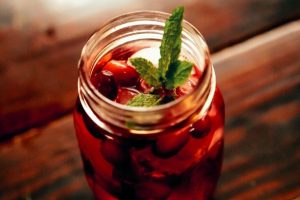Cooler air and earlier sunsets mark the beginning of fall. But so does the time when rich, hearty produce arrives. Below, we’ve highlighted nutrition benefits of a few fruits and vegetables available between September and December. Find more at your local grocery store!
Pumpkin
It’s hard to resist the smell of all things pumpkin-spiced when fall rolls around! But there’s more to this bright orange squash than it’s taste. Pumpkin is rich in the anti-oxidant beta-carotene. In the body, beta-carotene turns into Vitamin A, a nutrient important for healthy eyes, skin, and immune system. Beyond it’s flesh, pumpkin seeds are edible too! Roasted pumpkin seeds or store-bought pepitas are a source of healthy fats, fibre, and protein. Pumpkin and pumpkin seeds are delicious with sweet or savoury spices like thyme or cinnamon.
0.5 cup of pumpkin puree: 10.5 g carbohydrate and 4 grams of fibre (or 0.5 carbohydrate choices)
¼ cup of roasted pumpkin seeds: 8.5 g carbs, 3.0 grams of fibre, and 3 grams of protein.
Beets
We know beets for their earthy taste and deep red (or purple, orange, or yellow) colour. Due to compounds like betalains (an anti-oxidant with anti-inflammatory properties), nitrates, folate, and potassium, research has linked daily beet intake with improved blood flow, blood pressure, and cholesterol levels. Beets are not a replacement for blood pressure or cholesterol medication but they are a good example of why eating a variety of plant foods every day is good for our heart.
Beets are edible from their root to their stem. Their bright coloured bulbs can be eaten raw, pickled, steamed, or roasted, while their greens are tasty as a part of a salad or sautéed with garlic.
One cup of raw beets has 14 grams of carbohydrates and 2.5 grams of fibre
Beet greens have very little carbohydrate and are a good source of Vitamins A, C, and K.
Cranberries
Many people associate cranberry juice with protection against urinary tract infections (UTI’s). While thought to be true because of proanthocyanidins, compounds that prevent bacteria from sticking to cells in the bladder, cranberry products are too low to protect against UTI’s. Nevertheless, cranberries are still a good source of vitamins and minerals and are lower in potassium, which is optional for those living with diabetes and kidney disease. When living with diabetes, it’s important to look at the carbohydrate and sugar content of cranberry products because most have added sugars to enhance mask their tart taste. For a low-sugar option, use fresh or frozen cranberries for cooking or adding to smoothies. Opt for diet juice and if choosing dried cranberries, use them as garnish rather than a main ingredient.
1/2 cup fresh cranberry: 6 g carbohydrate, 2.3 g fibre
2 tbsp dried cranberry, sweetened: 12.5 g carbohydrae, 0.5 g fibre
Recipe: Roasted Root Vegetables
2 large carrots, peeled
2 medium parsnips, peeled
2 medium beets, peeled
1 medium red onion
1 medium sweet potato
3 tablespoon olive oil
1.5 teaspoon apple cider vinegar or balsamic vinegar
1 tablespoon of thyme, rosemary, or sage
½ teaspoon each salt and pepper
Line 2 large rimmed baking sheets with parchment paper. Chop all vegetables into 1/2-inch-thick wedges or cubes. Toss the vegetables with the rest of the seasoning and lay on the two baking sheets, spreading into a single layer.
Roast the vegetables at 425 degrees Fahrenheit, rotating the baking sheets top to bottom halfway through, until fork-tender, 30 to 40 minutes. Serve as a side dish or on top of your favourite whole grain and leafy greens.
Recipe: Cranberry Mocktail

Source: https://tinyurl.com/3f2bs99t
2 tablespoons mint, divided
2 tablespoons fresh cranberries, divided
1 cup diet cranberry cocktail, divided
1/2 cup sparkling water, divided
4 ice cubes
Place mint and cranberries in two glasses. Pour cranberry juice and water into each glass. Add ice and enjoy.
Per serving: Calories: 8, Carbohydrates: 2 g
Head to your local market or grocery store find a variety of other nutritious seasonal foods this fall.
Join us to create seasonal recipes at our upcoming Diabetes Cooking Classes themed: “Fall Flavours” Friday, October 20 or “Soups and Stews” Friday, November 17 from 9:30 am – 12:00 pm.
Registration is required for cooking classes – call 905-885-2626 ext. 238.


